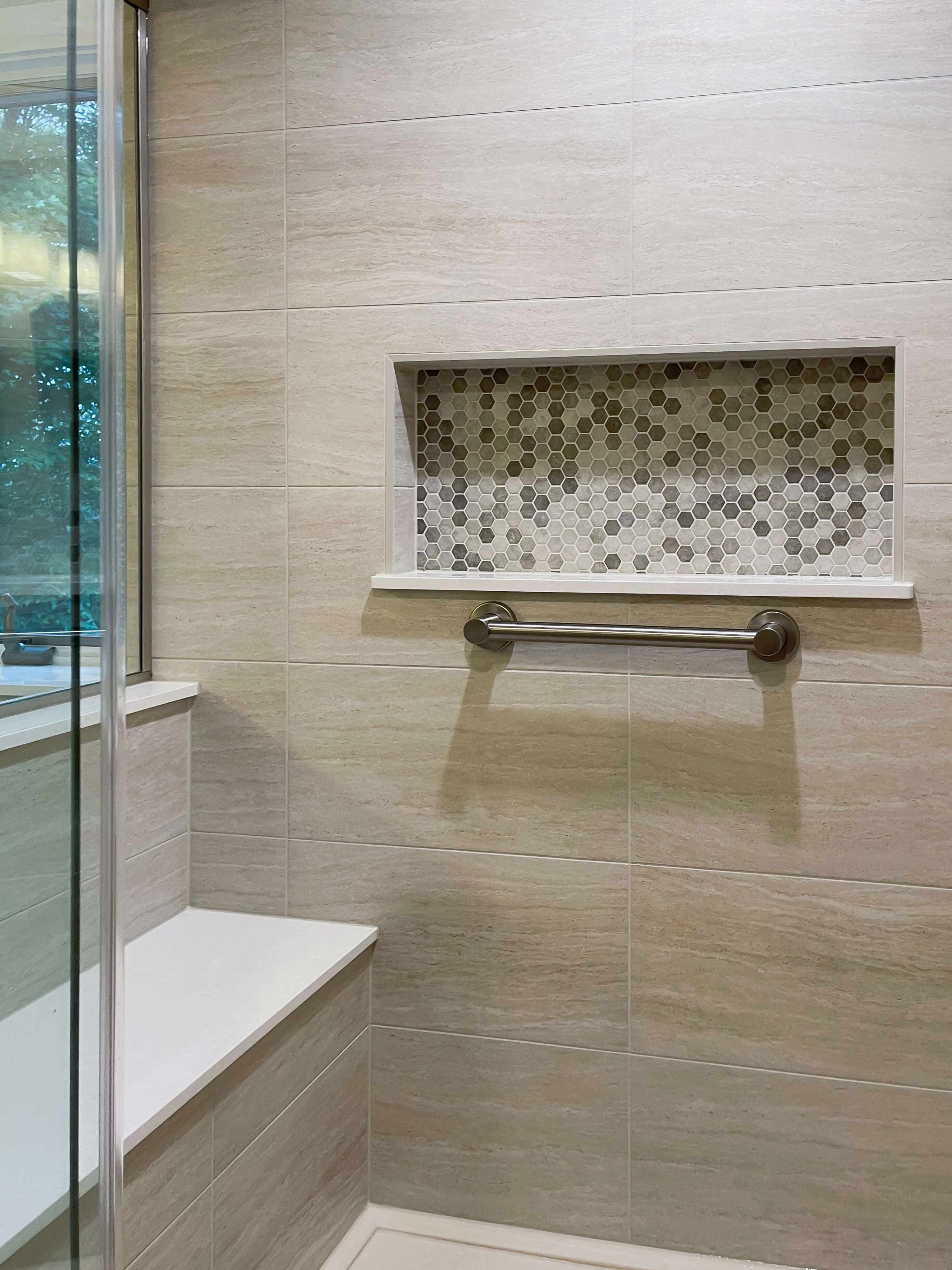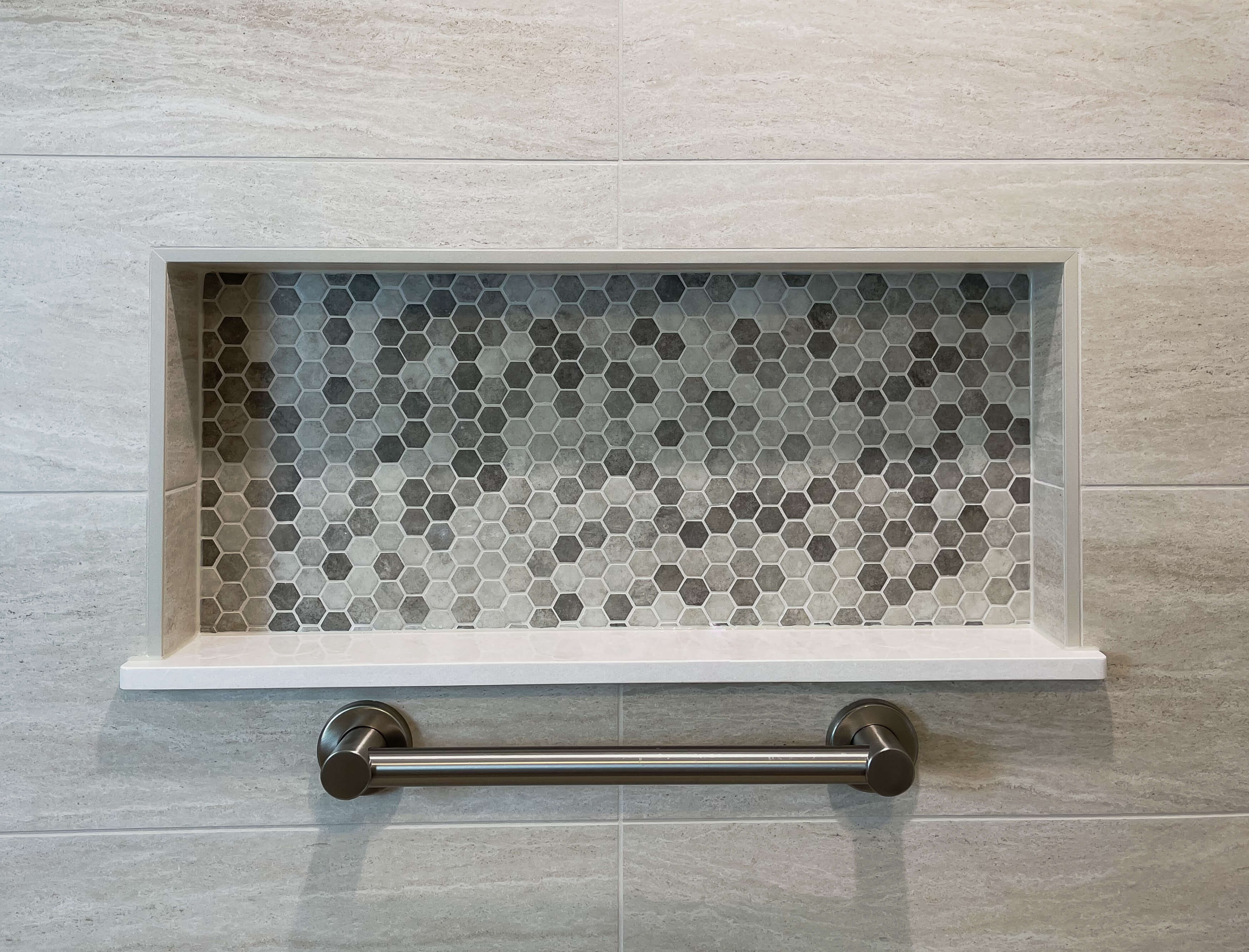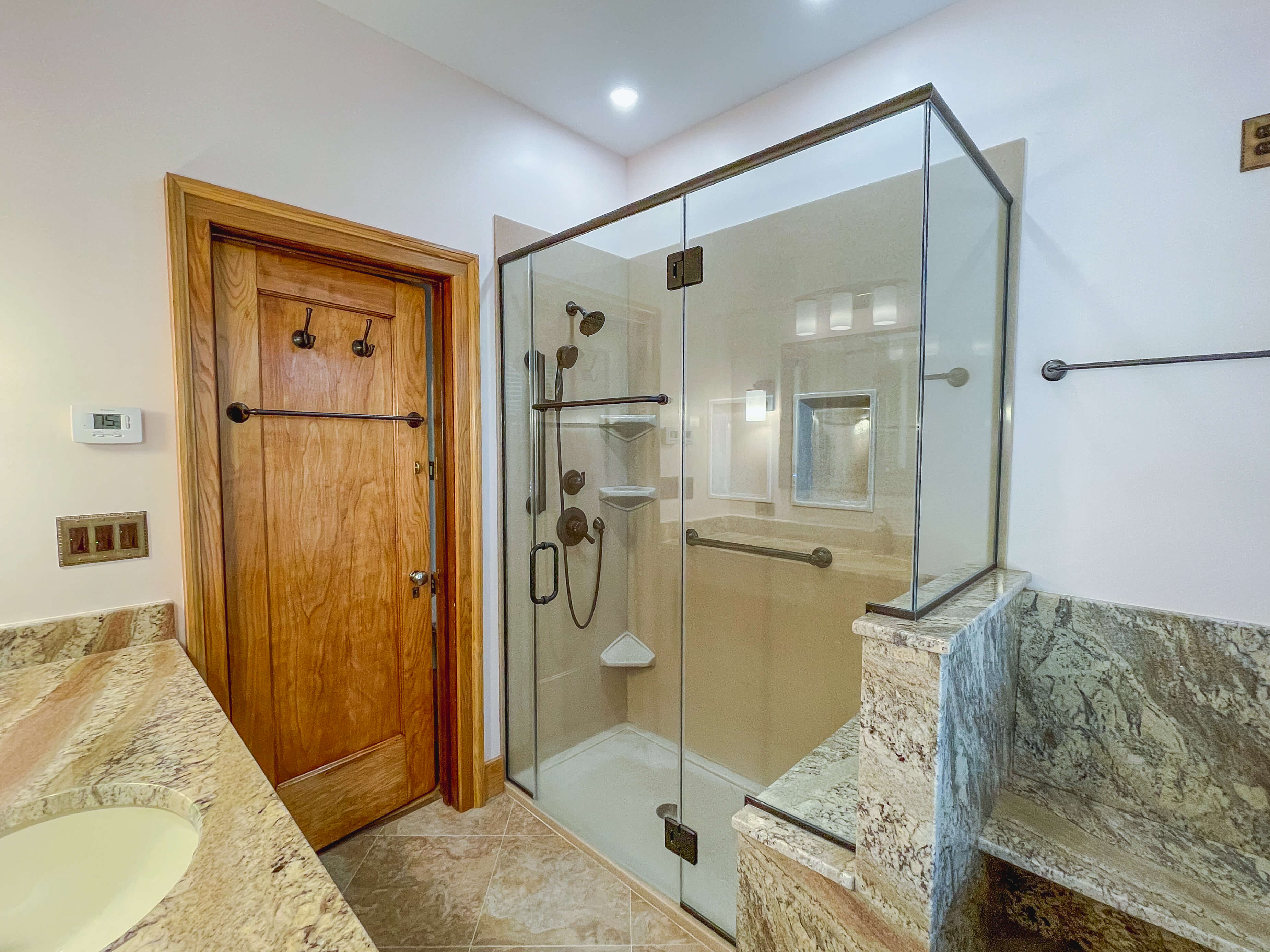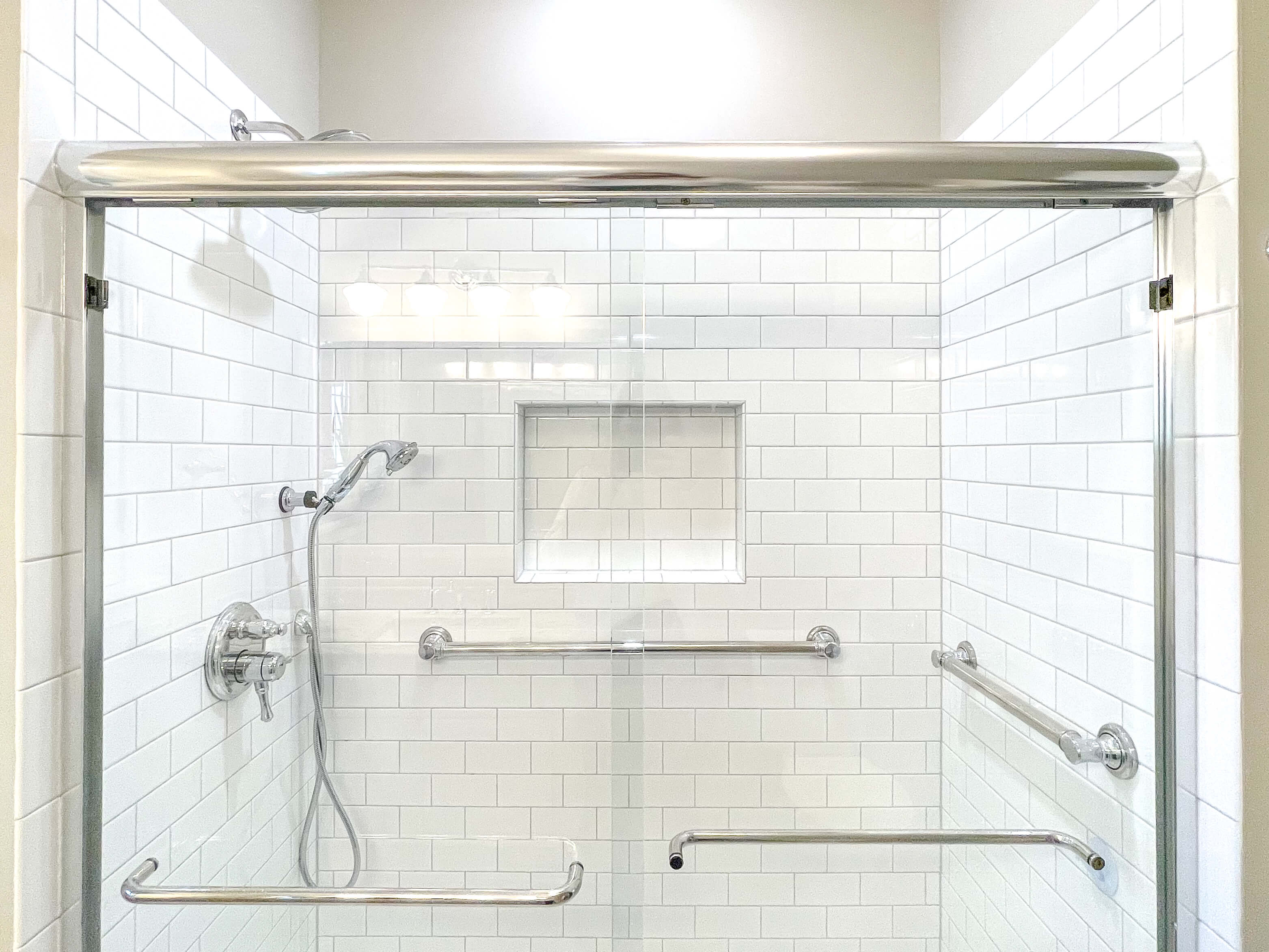
As a company that has completed many bathroom remodels, we've seen our fair share of shower and tub areas that could benefit from the installation of shower grab bars. These safety rails offer essential support, extra stability, and balance for those who need assistance standing up while bathing, particularly for seniors, individuals with mobility issues, or caregivers tending to their loved ones.
The Importance of Shower Grab Bars in Bathroom Safety
In this article, we'll draw from our firsthand experience building bathrooms to provide you with a comprehensive guide on shower grab bars. We'll address essential questions related to their placement, orientation, dimensions, compliance with building codes, weight capacity, and material options. Additionally, we'll discuss the differences between grab bars and assist bars, and share the most popular brands on the market.
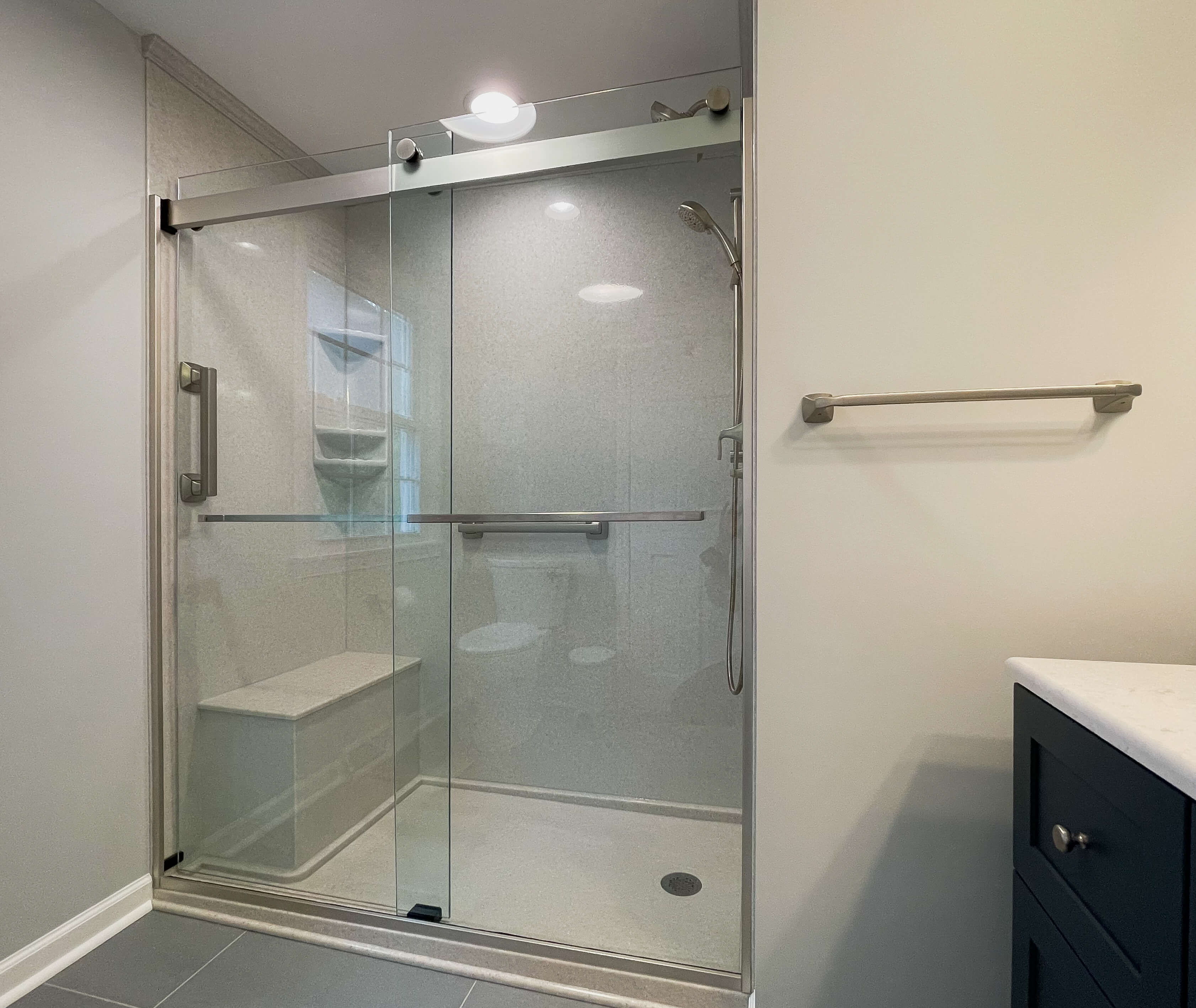
Where should grab bars be placed?
Grab bars should be placed near wet and slippery surfaces like the bathtub, shower floor, slick tile walls, and toilet areas to best assist users in preventing slips and falls. Ideally, grab bars should be installed in the following locations:
-
On the side wall of the tub or shower area, around 34-36" above the floor, to assist users in maintaining their balance while standing or stepping in and out of the shower.
-
On the back wall of the shower, approximately 9 inches above the seat height (if a shower seat is present) or at a comfortable height for the user to reach while sitting.
-
If the shower has a built-in seat, a vertical grab bar should be placed on the side wall, about 18 inches from the back wall, to help users maneuver into a standing position when transferring onto and off of the seat.
-
Within the toilet area, a 42" bar along a side wall and a 32" bar along the back wall.
The specific needs of the user should always be taken into account when determining grab bar placement. In every bathroom project we do, we always consult with our customers to ensure we understand their individual requirements for grab bars before making any installation decisions.
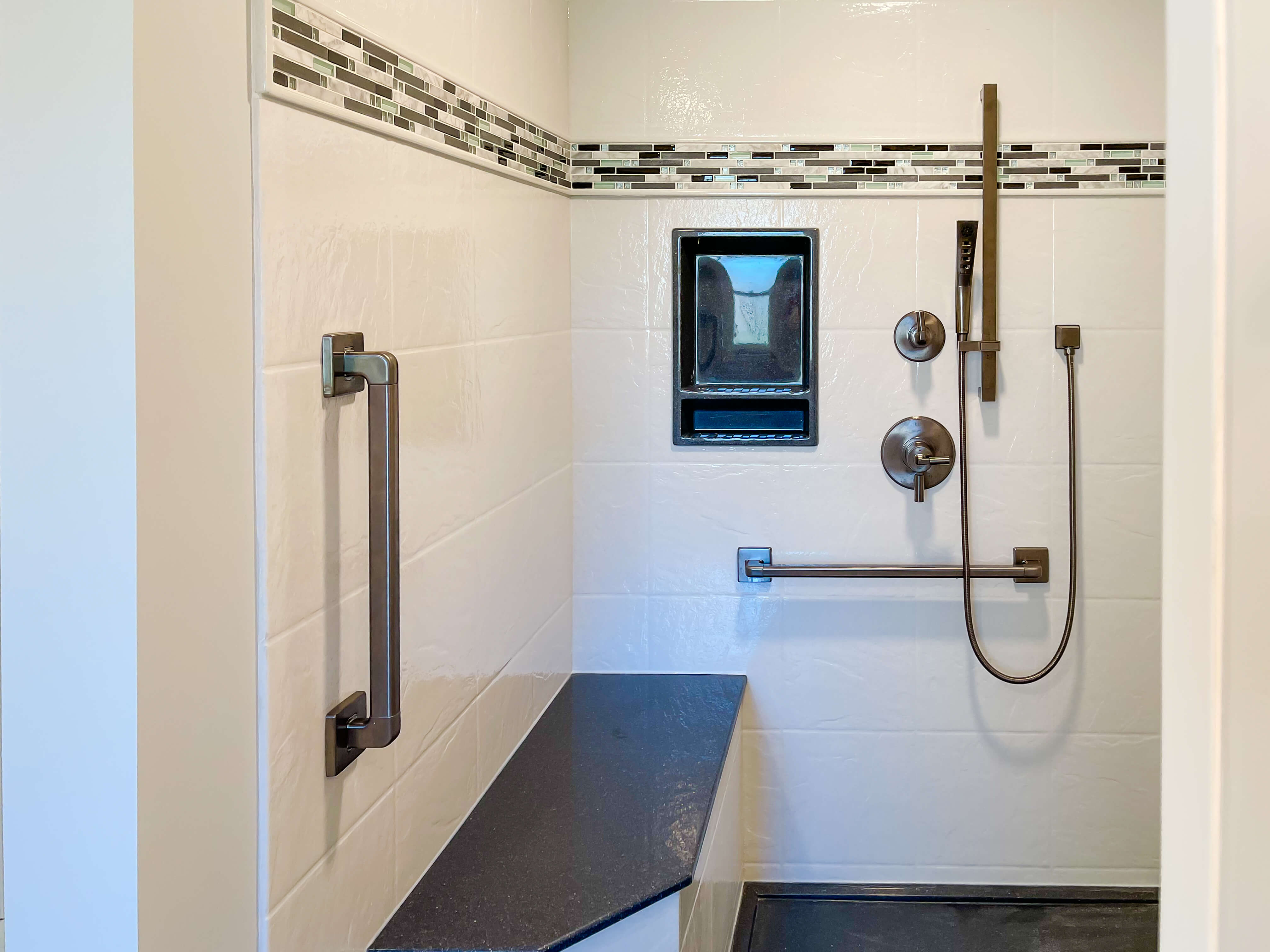 Should shower grab bars be vertical or horizontal?
Should shower grab bars be vertical or horizontal?
The orientation of shower grab bars will largely depend on the user's specific needs and preferences.
-
A horizontal grab bar provides a steady grip for users standing or sitting, making it easier for them to maintain their balance while showering.
-
A vertical grab bar offers a secure hold when the user needs assistance to stand up or sit down in the shower area or tub.
-
A diagonal shower grab bar combines the benefits of both horizontal and vertical bars, providing a versatile solution for users with varying abilities.
In our experience, we've found that diagonal grab bars are the most versatile option, as they can be comfortably gripped by users with a range of hand and wrist strengths. However, it's essential to consult with the user and/or their caregiver to determine the most suitable orientation for their needs.
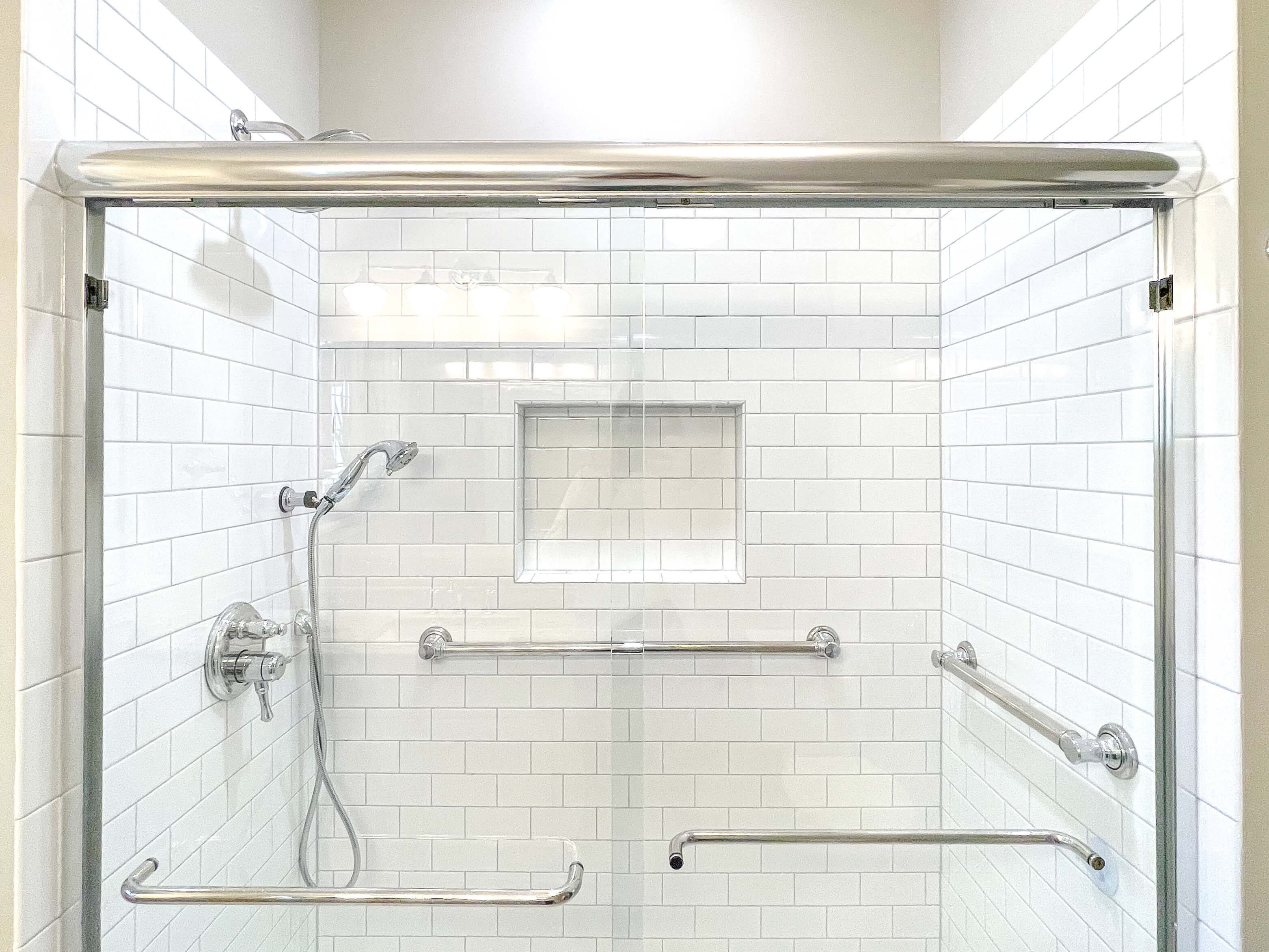 Do shower bars need to be installed in studs?
Do shower bars need to be installed in studs?
Yes, grab bars should be installed in wall studs. Ensuring that the bars are securely anchored to the walls and provide the necessary stability is a critical aspect of shower bar installation. Studs are the vertical wooden beams within the wall structure. By attaching bathroom grab bars directly to the studs, you ensure you create a strong and secure foundation capable of bearing the user's full weight.
While it may be tempting to use alternative methods such as wall anchors, suction cups, or adhesive mounts, these options typically do not provide the same level of safety and support as a stud-mounted grab bar. Non-stud installations can be unreliable, increasing the risk of grab bars coming loose or failing under pressure, potentially leading to falls and injuries.
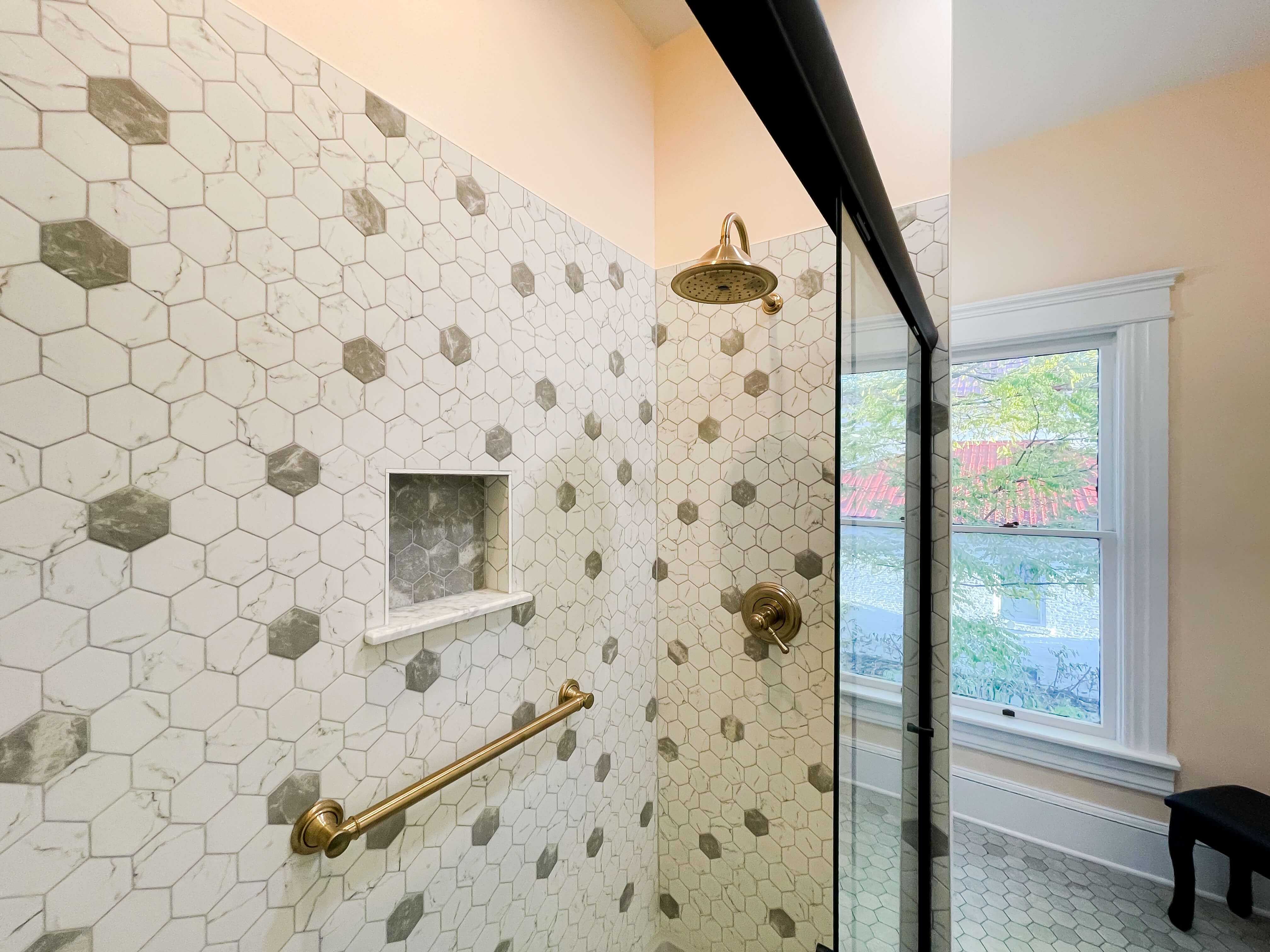
What is a good length for a grab bar?
The ideal length for a grab bar in a shower will vary depending on the user's needs and the available space. Standard grab bar lengths include 12, 16, 18, 24, 32, and 36 inches. When selecting the appropriate length, we recommend considering the following factors:
-
The user's hand size and grip strength
-
The shower's wall dimensions and space constraints
-
The required level of stability
In our experience, a 24-inch grab bar is a versatile option that can accommodate a wide range of hand sizes and provide ample support for most users. However, as with any bathroom remodeling project, it's important to consult with the user and consider their specific requirements before making a final decision.
How high off the floor should grab bars be?
The ideal height for bathroom grab bars depends on the specific needs and preferences of the user, but there are some general guidelines to follow. According to ADA Standards for Accessible Design, shower grab bar height when installed horizontally should be between 33 and 36 inches above the finished floor. This height range is considered optimal for providing the necessary support and stability for most individuals.
However, it's important to consider the unique needs and abilities of the user when determining the appropriate height for grab bars. For example, shorter or taller individuals may require a different height for optimal support. To ensure the best fit, it is recommended to consult with the user or a professional to determine the most suitable height for the grab bar before installation.
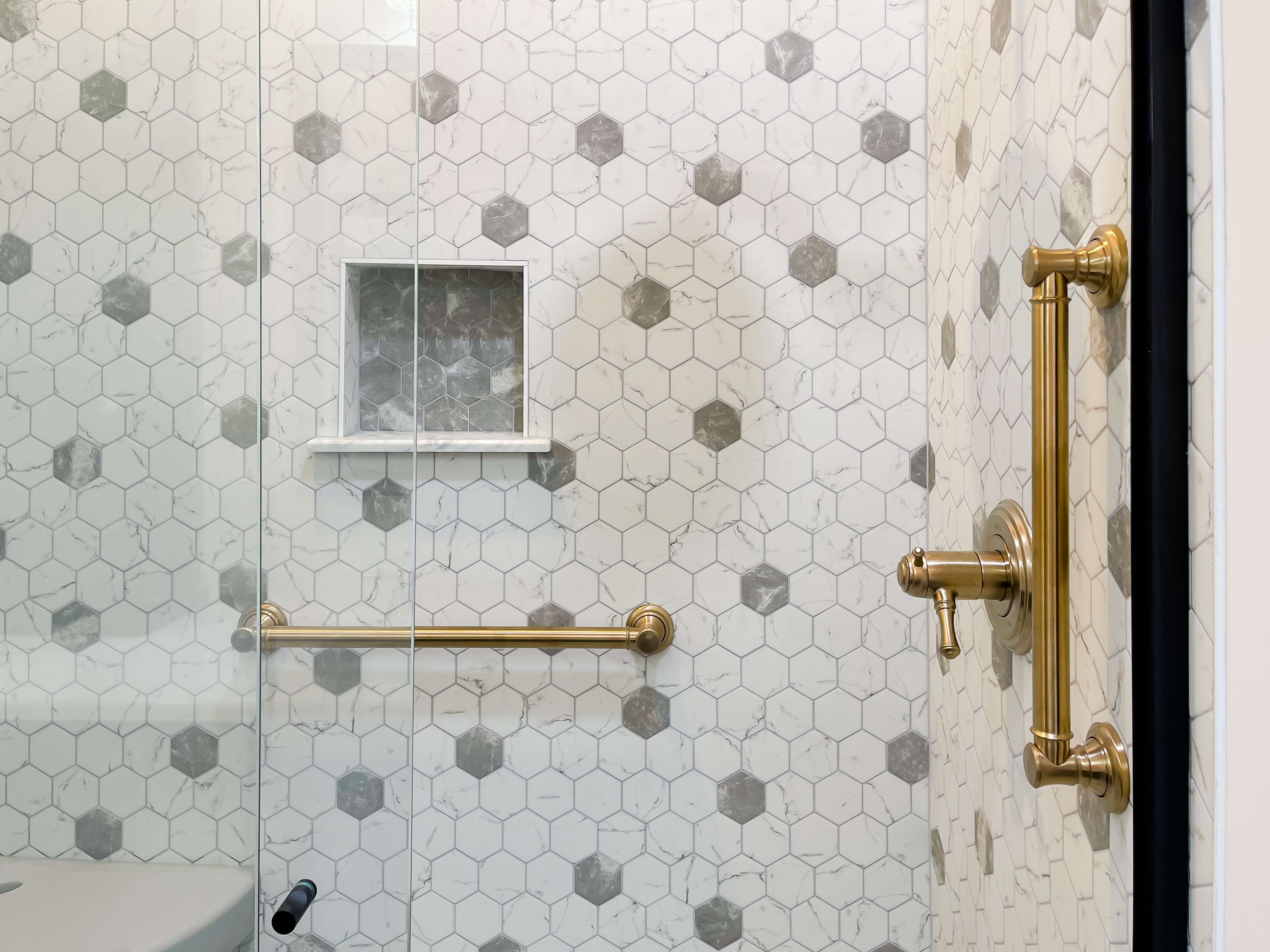 What is the code for grab bars in a shower?
What is the code for grab bars in a shower?
Building codes regarding grab bars in showers and bathrooms are typically governed by the Americans with Disabilities Act (ADA) and the International Residential Code (IRC). We recommend all installations comply with these regulations to ensure a safe and accessible environment.
Key aspects for shower grab bars include:
-
Grab bars must be installed at a height of 33 to 36 inches from the shower floor.
-
The space between the wall and the grab bar should be 1.5 inches.
-
Grab bars should be able to support a minimum of 250 pounds.
-
The grab bar's surface should be slip-resistant.
-
Hardware used for mounting grab bars should be resistant to corrosion.
While these guidelines provide a solid foundation, it's important to consult your local building codes, as they may have additional requirements or variations. As professionals, we always ensure that our installations meet or exceed all applicable codes to guarantee safety and compliance.
What is the difference between a grab bar and an assist bar?
The difference between a grab bar and an assist bar is that grab bars are designed to support the user's full weight while assist bars are not. The terms are sometimes used interchangeably, but it's crucial to understand the difference to choose the appropriate type of bar for the user's needs.
-
Grab bars can reliably support the user's full weight, providing stability and assistance for those with mobility issues or requiring additional stability while showering. They are typically made of durable materials, like stainless steel or metal, and must meet specific weight capacity and building code requirements.
-
Assist bars, on the other hand, are intended to offer some degree of balance support but are not necessarily designed to support the user's full weight. They may be made from materials such as plastic or less robust metals and are often used in conjunction with other safety features.
Although the terms are sometimes used interchangeably, it's crucial to choose the appropriate type of bar for the user's needs. Selecting an assist bar when a grab bar is needed could increase the risk of falls or injuries.
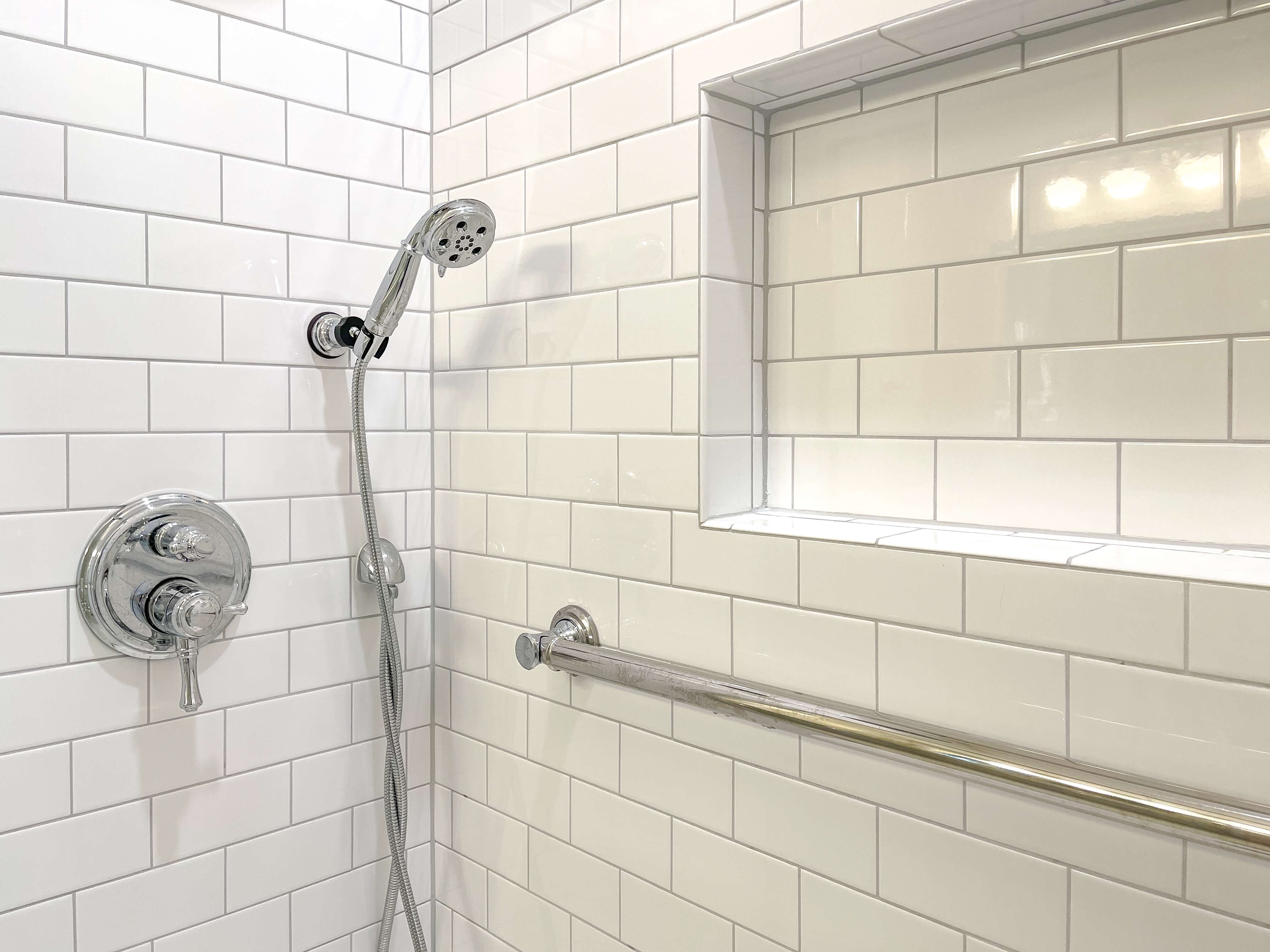
How much weight should a grab bar hold?
A bathroom grab bar must be able to support a minimum weight of 250 pounds as per the ADA and IRC codes. However, some grab bars on the market are designed to hold even more weight, with options offering weight capacities of up to 500 pounds.
As professionals, we always recommend choosing a grab bar with a weight capacity that comfortably accommodates the user's needs. It's better to err on the side of caution and select a grab bar with a higher capacity to ensure the utmost safety, added stability, and durability.
What are common materials for grab bars?
Bathroom grab bars are available in a variety of materials, each with its pros and cons. When choosing a material for a grab bar, we always take into account the user's needs, budget, and design tastes. Grab bars no longer look institutional and can blend with stylish decor and bath fixtures. Some of the most common materials include:
-
Stainless steel: This corrosion-resistant and durable option is highly popular for its longevity, strength, and easy maintenance. Stainless steel can also be found in various finishes to match different bath design styles.
-
Brass: Although a pricier option, brass grab bars are known for their corrosion resistance and elegant appearance. Brass bars can also be coated with a variety of finishes.
-
Aluminum: Lightweight and rust-resistant, aluminum grab bars offer an affordable and durable option. They can be coated with various finishes to complement bathroom designs.
-
Plastic: While plastic grab bars are lightweight and budget-friendly, they are typically less durable and may not be suitable for users who require substantial support.
What are the most popular grab bar brands?
As a bathroom remodeling company, we've encountered various brands with an array of features, designs, and price points. We recommend choosing ones that are ADA compliant. Some of the most popular and reputable brands for bars include:
-
Moen: Known for its high-quality products and wide selection, Moen offers grab bars in various materials, lengths, and finishes, ensuring a suitable match for most users.
-
Delta: Delta provides an extensive selection, including ADA-compliant options, with a focus on both functionality and aesthetics.
-
Kohler: A well-established brand in the bathroom fixture industry, Kohler offers a variety of grab bars that boast durability, functionality, and elegant designs.
In addition to these popular brands, there are many other options available on the market. We recommend researching and comparing different brands, reading reviews, and consulting with professionals to ensure you find the best grab bar to suit your needs and preferences.
In Conclusion
With our years of experience remodeling bathrooms, we understand the importance of shower grab bars in ensuring safety, independence, and comfort for individuals with varying mobility levels. By considering factors such as placement, orientation, length, material, and adherence to building codes, we strive to provide our customers with optimal solutions tailored to their specific needs.
Whether you're planning to remodel your bathroom or looking to enhance its safety features, we hope this comprehensive guide has provided you with valuable information to help you make informed decisions. As always, we encourage you to consult with a professional to ensure the best results and a safe and secure shower area for you and your family.
If you are a homeowner in the Syracuse or Central New York area and are looking for a bathroom remodeling company to help you implement these safety features, please don't hesitate to contact us for a consultation. Our team of professionals is always ready to provide expert guidance to make your bathroom both beautiful and functional for all users.
Related Posts
Walk-In Shower Design Ideas and Remodeling Tips [Free Guide]
One of today’s most popular bathroom trends is a walk-in shower. Why? Most people prefer a shower...
The Exciting New Look of Shower Wall Panels
Manufacturers of shower wall panels are creating exciting new designs. They now feature products...

